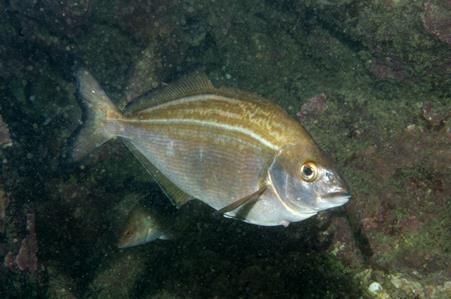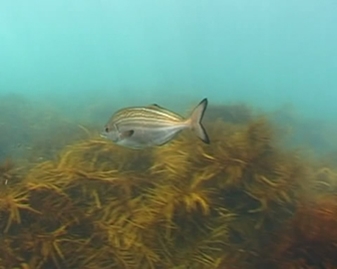General Description
Body rather long, compressed, moderately deep; tail base narrow; dorsal and anal fins low, dorsal fin deeply notched; tail deeply forked; pectoral fin bluntly pointed, upper rays longest. Silvery grey with greenish brown to brown irregular slender markings above lateral line, margin of pectoral fins and tail black, eye yellowish white. To 65 cm.
Biology
These fishes usually occur in small numbers but schools of thousands have been seen by divers. Their flesh is considered very good eating.
Habitat
On rocky reefs, in depths of 2-60 m.
Reefs
Distribution guide
New Zealand and south-eastern Australia.
Species Group
Depth
Shallow (1-30 m)
Deep ( > 30 m)
Water Column
Max Size
65 cm
Commercial Species
No
Global Dispersal
Recorded in Australia
Conservation Status
- DSE Advisory List : Not listed
- EPBC Act 1999 : Not listed
- IUCN Red List : Not listed







